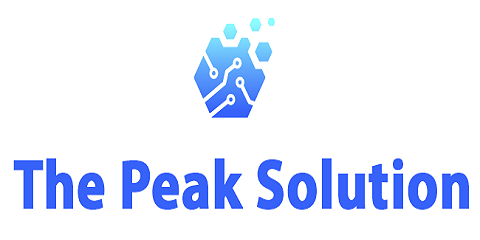Preparing for the CMMC Level 2 Certification Assessment doesn’t need to feel like a maze. For businesses handling Controlled Unclassified Information (CUI), pressure builds quickly once certification talks begin. A well-planned mock audit, though, can turn that pressure into preparation.
Early Detection of Compliance Pitfalls Before Formal Review
A mock audit opens the door to honest discovery. Before any official C3PAO steps in, internal teams can uncover policy gaps, control misalignments, or misunderstood practices. It’s not unusual for companies to assume they’re on track, only to realize critical items—like multi-factor authentication or access reviews—are partially implemented or missing documentation. By treating the mock seriously, organizations can identify blind spots long before a formal CMMC Level 2 Assessment begins.
It’s a dry run, but with real stakes. The early findings of a mock audit help pinpoint the kind of compliance issues that slow certification progress or cause assessment failure. Many businesses use the CMMC assessment guide but don’t always connect controls with day-to-day operations. This internal check offers perspective that printed guides can’t always provide. Teams start thinking like auditors, which leads to stronger habits across the board.
Mock Assessments Reduce Friction in Final Certification Steps
Reaching the finish line with fewer bumps is the real win. By staging a mock version of the CMMC Certification Assessment, companies sharpen their audit-readiness without risking an official rejection. These practice runs often surface hiccups in evidence collection, control mapping, and response strategies. And every fix made in this stage reduces time and tension later.
Think of it as a rehearsal with real notes. The more an organization tests its preparation under realistic audit conditions, the better it understands what the assessors will expect. It helps align internal language with assessment terminology. This matters during interviews, evidence presentation, and walkthroughs. By smoothing out those communication wrinkles early, companies can walk into the formal CMMC Level 2 certification assessment more confident and coordinated.
Budget Protection Through Proactive Vulnerability Checks
Failing a CMMC Level 2 Assessment isn’t just frustrating—it’s expensive. Each missed control can result in lost contracts or costly reassessments. A mock audit acts like a financial shield by giving teams a chance to course-correct before external parties are involved. It’s far cheaper to fix problems early than to address findings after an official assessment.
Smart teams tie mock audit findings directly to their budget planning. If gaps require new tooling or process improvements, they get flagged early enough to allocate resources. A mock CMMC Certification Assessment helps decision-makers spend on the right priorities, not scramble after funding once weaknesses are officially documented. The result? Stronger ROI on compliance investments and fewer surprise expenses.
Streamlined Remediation Guided by Authentic Audit Scenarios
Realistic pressure changes how teams respond. A mock assessment doesn’t just list what’s wrong—it shows how gaps look in context. This makes remediation much more targeted. For example, identifying that a control is only partially in place becomes far more actionable when seen under simulated audit scrutiny. The audit prep suddenly feels personal, and that’s a good thing.
By mimicking authentic audit conditions, organizations can stress-test their remediation workflows. Who responds to findings? How fast do updates get deployed? Can they generate supporting evidence quickly? These are details that often surface too late. But with a mock run, remediation becomes a structured process, not a last-minute scramble. It’s how good plans become better habits.
Clarified Compliance Objectives Ahead of C3PAO Involvement
Before the official CMMC Level 2 Certification Assessment begins, many teams are unsure where their responsibilities end and where the assessor’s expectations begin. Mock audits create that clarity. They help teams separate “nice to have” from “must have” by mirroring how an authorized C3PAO will approach the evidence, interviews, and technical review.
This rehearsal phase also boosts internal alignment. Departments often interpret compliance in slightly different ways—what IT considers secure might not meet CMMC documentation standards. A structured mock helps bridge those gaps by setting a shared understanding. That way, once the real CMMC Certification Assessment starts, everyone speaks the same language and follows the same map.
Simulated Evaluations Fortify Internal Security Frameworks
Beyond certification goals, a mock assessment strengthens the actual backbone of an organization’s security. It reveals whether current defenses truly hold up under examination or just look good on paper. This is where checklists meet reality. A company might say it restricts access to CUI, but during a mock, it could become clear that user deprovisioning lags behind policy.
The best part is the side effect—teams begin thinking in terms of continuous improvement. A mock CMMC Level 2 Assessment teaches organizations how to move from reactive compliance to proactive security. Over time, this mindset shift builds stronger habits, tighter processes, and better defense-in-depth strategies. The certification becomes the milestone, not the goal.
Readiness Benchmarks Established by Mock Assessment Insights
A mock audit also offers a way to measure progress that feels real. It creates benchmarks—where the organization started, how far it’s come, and what gaps remain. Without this, teams often move forward without knowing how ready they truly are. Mock audits create data points that guide timelines and resource decisions.
This measurable insight allows leadership to track readiness with more than guesswork. It also helps in reporting to stakeholders and preparing teams for final interviews or walkthroughs. As part of the broader CMMC assessment guide strategy, mock assessments turn abstract requirements into concrete checklists. And those checklists bring teams one step closer to confident certification.










